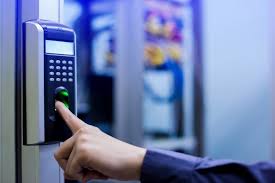It scans and matches fingerprints against stored data to verify a person's identity. Here are some key aspects of fingerprint access control systems:
Fingerprint Scanning: Users place their finger on a scanner that captures their fingerprint pattern.
Data Matching: The system compares the scanned fingerprint fingerprint access control with stored templates in its database.
Access Decision: If the fingerprint matches, the system grants access; if not, it denies entry.
Components of a Fingerprint Access Control System
Fingerprint Scanner: Captures fingerprint images and converts them into digital data.
Processor and Software: Analyzes the fingerprint data and matches it against saved templates.
Access Control Mechanism: Can be connected to doors, safes, computers, or other entry points.
Database: Stores fingerprint templates and manages user access permissions.
Types of Fingerprint Scanners
Optical Scanners: Use light to capture fingerprint images.
Capacitive Scanners: Detect fingerprint patterns through electrical currents.
Ultrasonic Scanners: Use sound waves for more detailed and secure fingerprint mapping.
Benefits
High Security: Difficult to duplicate; fingerprints are unique to each person.
Convenience: No need for physical keys or cards; just a fingerprint is required.
Audit Trail: Some systems log entry attempts, providing a record of who accessed a location.
Considerations and Limitations
Accuracy and Spoofing: Some systems can be vulnerable to high-quality fingerprint replicas.
Hygiene: Shared scanners can be a concern in public or high-traffic areas.
Enrollment Process: Each user needs to be individually enrolled in the system, which can be time-consuming in large organizations.
Fingerprint access control is widely used in various sectors, including corporate offices, financial institutions, and personal devices (e.g., smartphones and laptops), enhancing security and convenience.





Comments